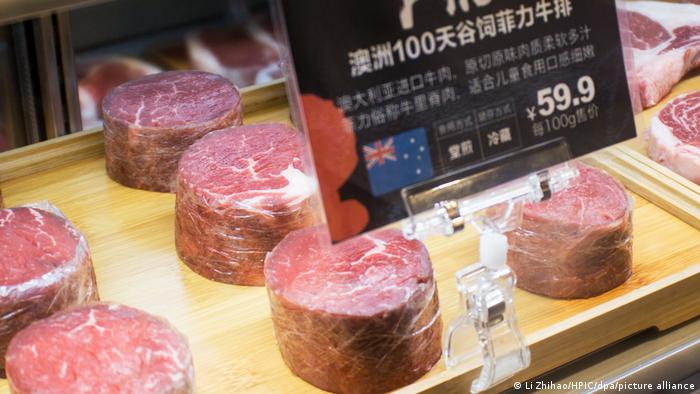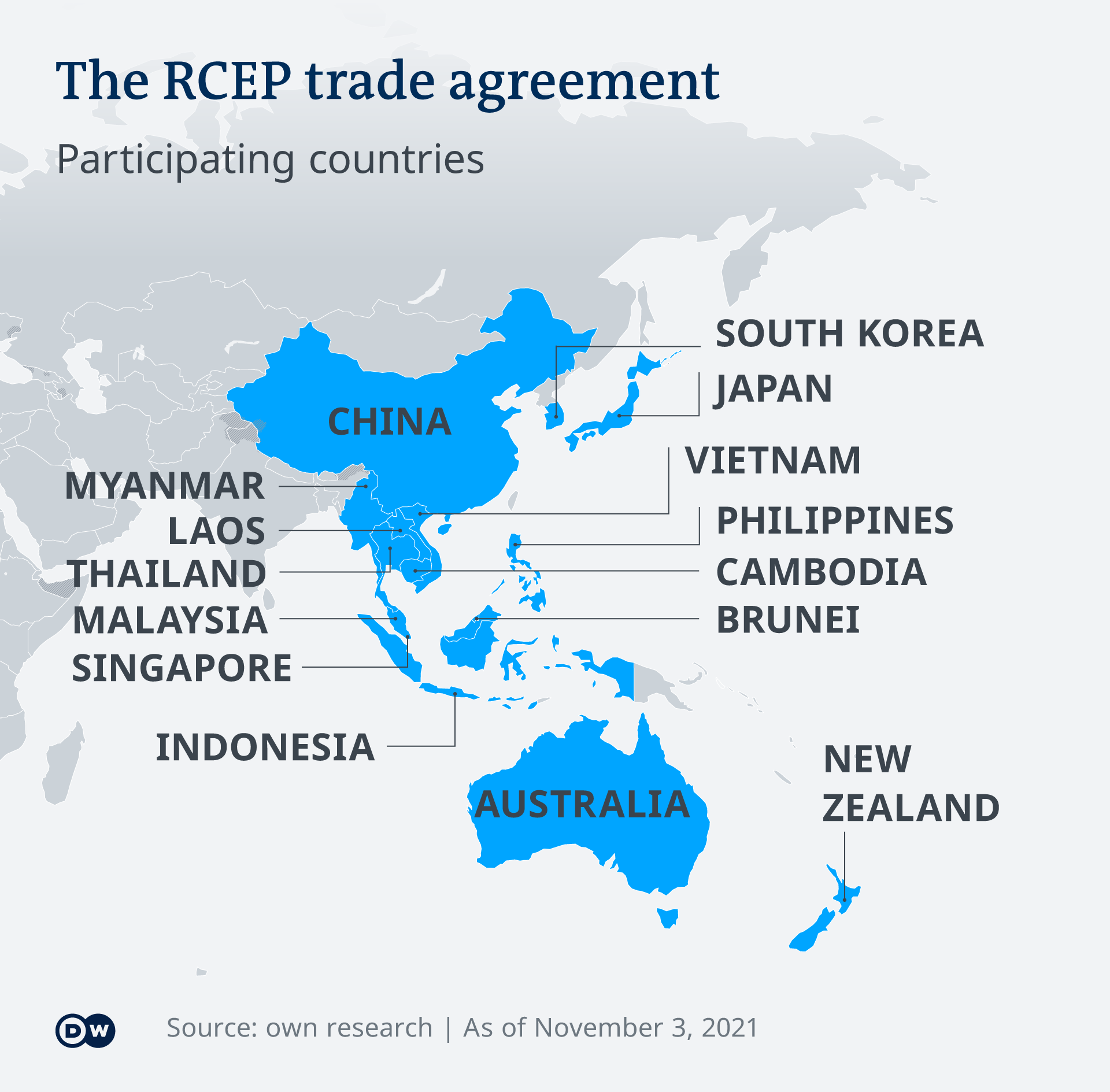Chauncey Devega, Salon
November 03, 2021

Via Sandy Huffaker/AFP
LONG READ
America's mainstream news media has a short attention span, which has certainly played to the advantage of the long-running Republican-fascist assault on democracy (and on reality). Of late, the media has grown bored with QAnon, the antisemitic and racist conspiracy cult which claims to believes that a secret cabal of pedophile Democrats and other members of the "deep state" run the world — and gain superpowers from kidnapping and killing children and then ingesting their vital essence. In this demented worldview, only Donald Trump and other "patriots" can save America and the world.
It appears that QAnon followers played a significant role in the attack on the Capitol and coup attempt on Jan. 6. No leaders of that coup plot have been apprehended or punished, and most of the foot soldiers have received relatively lenient punishment to this point. President Joe Biden and Attorney General Merrick Garland appear reluctant to apply the full power of the law to punish Donald Trump, along with his allies, operatives and followers.
QAnon followers are also attempting to undermine American democracy and civil society by infiltrating such "vulnerable" sites as local school boards, library committees and other ground-level institutions of local and state government. Their purported goal may be to ban the teaching of "critical race theory" (which is not taught in public schools), but the real goal is larger: to enforce punishment of "unpatriotic" thoughtcrimes, and to mainstream right-wing conspiracy theories and other lies about American history.
QAnon followers are also seeking to become election officials, where they are planning to use the fervor around Trump's Big Lie and other conspiracy theories to rig election results, overthrow multiracial democracy and replace it with one-party Republican rule.
In an article posted last June, the National Education Association explored the QAnon-fueled "radicalization" of school boards in communities all over America:
In a small town in Washington State, the newly elected mayor calls QAnon, "a truth movement," and recently fired the town's skeptical city manager. In coastal San Luis Obispo, California, a school board trustee's Facebook posts include a QAnon video, misinformation about COVID-19 and Black Lives Matter, and promotion of the ex-gay, conversion movement. She won, says the town's mayor, who is calling for her resignation, because "people had no idea this was going on," and didn't have the "bandwidth to research the school board election," reports the local newspaper, the Tribune.
Meanwhile, in Florida, a newly elected county sheriff is now explaining why he posed for photos last year with a supporter in a "We are Q" t-shirt.
America's mainstream news media has a short attention span, which has certainly played to the advantage of the long-running Republican-fascist assault on democracy (and on reality). Of late, the media has grown bored with QAnon, the antisemitic and racist conspiracy cult which claims to believes that a secret cabal of pedophile Democrats and other members of the "deep state" run the world — and gain superpowers from kidnapping and killing children and then ingesting their vital essence. In this demented worldview, only Donald Trump and other "patriots" can save America and the world.
It appears that QAnon followers played a significant role in the attack on the Capitol and coup attempt on Jan. 6. No leaders of that coup plot have been apprehended or punished, and most of the foot soldiers have received relatively lenient punishment to this point. President Joe Biden and Attorney General Merrick Garland appear reluctant to apply the full power of the law to punish Donald Trump, along with his allies, operatives and followers.
QAnon followers are also attempting to undermine American democracy and civil society by infiltrating such "vulnerable" sites as local school boards, library committees and other ground-level institutions of local and state government. Their purported goal may be to ban the teaching of "critical race theory" (which is not taught in public schools), but the real goal is larger: to enforce punishment of "unpatriotic" thoughtcrimes, and to mainstream right-wing conspiracy theories and other lies about American history.
QAnon followers are also seeking to become election officials, where they are planning to use the fervor around Trump's Big Lie and other conspiracy theories to rig election results, overthrow multiracial democracy and replace it with one-party Republican rule.
In an article posted last June, the National Education Association explored the QAnon-fueled "radicalization" of school boards in communities all over America:
In a small town in Washington State, the newly elected mayor calls QAnon, "a truth movement," and recently fired the town's skeptical city manager. In coastal San Luis Obispo, California, a school board trustee's Facebook posts include a QAnon video, misinformation about COVID-19 and Black Lives Matter, and promotion of the ex-gay, conversion movement. She won, says the town's mayor, who is calling for her resignation, because "people had no idea this was going on," and didn't have the "bandwidth to research the school board election," reports the local newspaper, the Tribune.
Meanwhile, in Florida, a newly elected county sheriff is now explaining why he posed for photos last year with a supporter in a "We are Q" t-shirt.
Across the county, conspiracy theorists and proponents of fake news are winning local elections. And their new positions give them a powerful voice in everything from local law enforcement to libraries, trash pickup to textbook purchases.
QAnon followers are also gaining influence and power within white Christian evangelical churches and other faith communities. This is integral to the worsening radicalization of white Christianity and the threat of a right-wing "holy war" against Democrats, liberals, progressives, Black and brown people and anyone else who believes in the separation of church and state, or who holds values and beliefs deemed "un-American" or "anti-Christian."
Public opinion polls and other research show that a large percentage of Republicans and Trump followers say they believe in at least portions of the outlandish QAnon fantasy and — not coincidentally — are also willing to support right-wing political violence to protect their "traditional way of life" and "save the country." This includes removing President Joe Biden from office by violent means if deemed necessary.
Matthew Rozsa of Salon summarized these findings this week:
New public opinion research from the nonprofit Public Religion Research Institute, part of its 12th annual American Values Survey, has returned alarming findings.
Close to one-third of Republicans in the survey, or 30%, agreed with the statement that "true American patriots may have to resort to violence in order to save our country." That was more than the combined total of Democrats and independents who say the same thing (at 11% and 17%, respectively).
PRRI CEO and founder Robert Jones said the large proportion of Republicans who appear ready to endorse political violence is "a direct result of former President Trump calling into question the election." Jones noted that according to the same survey, more than two-thirds of Republicans (68%) claim that the 2020 presidential election was stolen from Donald Trump, as opposed to only 26% of independents and 6% of Democrats.
The study also found that 39% of those who believed that Trump had won the 2020 election endorsed potential violence, compared to only 10% of those who rejected election misinformation. There were also signs of a split based on media consumption, with 40% of Republicans who trust far-right news sources agreeing that violence could be necessary, compared to 32% of those who trust Fox News and 22% among those who trust mainstream outlets. In addition, respondents who said violence may be necessary are more likely to report feeling like strangers in their country, to say American culture has mostly worsened since the 1950s and to believe that God has granted America a special role in human history.
Sophia Moskalenko is a social psychologist and expert on conspiracy theories, radicalization and extremism. She is currently a research fellow at the National Consortium for the Study of Terrorism and Responses to Terrorism (NC-START) and is the author of several books, including "Friction: How Radicalization Happens to Them and Us" and "The Marvel of Martyrdom: The Power of Self-Sacrifice in the Selfish World." Her new book, with co-author Mia Bloom, is "Pastels and Pedophiles: Inside the Mind of QAnon."
In this conversation Moskalenko discusses the dangers QAnon poses to American democracy and national security. She explains that QAnon is a community where overwhelmingly white and often socially alienated followers find fellowship and meaning as they are radicalized into extremism and other potentially dangerous antisocial behavior. In her view, QAnon functions as a space that nurtures and satisfies white fantasies of right-wing masculinity, femininity, violence and heroism about "protecting" children and reasserting "traditional values".
Toward the end of this conversation, Moskalenko explains what she would tell Joe Biden and other senior members of the administration about the threats posed by right-wing terrorism, as well as about the ways hostile foreign powers are using disinformation and other forms of propaganda to weaken American democracy and society.
This conversation has been edited for clarity and length.
You are an expert on terrorism and other forms of political extremism. You are also an expert on propaganda and disinformation. How are you feeling right now, given America's democracy crisis?
I've been feeling a little bit like Cassandra, the woman in Troy who was yelling as loud as he could about the city falling to ruin, and everybody was laughing at her. Then of course her warnings came true. It doesn't feel good. There was so much attention being paid to Islamic terrorism after 9/11. Unfortunately, there was not enough attention being paid to the trends right here in the United States domestically. This was all very alarming for somebody such as me who is an expert on terrorism and radicalization. These trends pointed to how right-wing groups were attracting more people and carrying out more and more lethal attacks.
There were people in positions of power and influence here in the United States who were beginning to pander increasingly to these groups. And of course, Trump's presidency was a type of pinnacle for that behavior. Those appeals to right-wing extremist groups are now crystallized in congressional representatives who are outspoken supporters of QAnon conspiracy theories.
There was also Trump's line after the riots in Charlottesville about "good people on both sides," which implies that maybe Nazis aren't so bad. This problem has been developing for a long time.
When you looked at the events of Jan. 6, what did you see? What jumped out at you?
I'm a psychologist, so I focused on the emotions that I observed in the faces, the screams and the actions of the Trump followers who were there that day at the Capitol.
It was just striking to me how angry and violent and ready to inflict serious damage a lot of those people were. On Jan. 6, I saw a huge crowd of people who look just like my neighbors but who were acting in a very threatening and menacing way. It was disturbing. I also, of course, saw many QAnon symbols and antisemitic symbols and other references to hate groups.
I was also struck by the composition of the people at the Capitol on Jan. 6. They were very diverse in terms of age and gender. From the Arab Spring to images from the Ukrainian revolution or Georgian revolution, we mostly see men carrying out these mass radical actions. But on Jan. 6 at the Capitol, we saw a lot of women. There were many young people and also people in their 60s and 70s. That is very unusual, in many ways, as far as radical movements go.
There were various right-wing extremist groups and other forces involved in the events of Jan. 6. What role did QAnon conspiracy believers play?
We know that between 10% and 20% of people present at the Jan. 6 insurrection were members of right-wing militia groups such as the Proud Boys and Oath Keepers and Three Percenters. A sizable proportion of those groups also consisted of active-duty military or veterans. Those militia groups also include active or retired police.
As for QAnon members, after Jan. 6 when the prophecy about Trump's return was unfulfilled, a number of QAnon followers became disenchanted. They went back online looking for answers, like they did before they found QAnon. Now they are looking for something else.
There was a concerted effort by the right-wing extremist groups to bring them in, because they were like lost sheep. The way these groups and individuals talk about the QAnon types is very dismissive. They call them idiots. They call the QAnon prophecy nonsense. But they felt this was an opportunity to recruit a bunch of disenchanted QAnoners into their ranks.
We know that both QAnon and the right-wingers I am discussing here are very antisemitic and racist. Whatever they may say about it, we know from the data we have collected from their own materials that they express clearly antisemitic and racist attitudes. In that aspect there is an overlap, at least psychologically, between QAnon and these right-wing extremists.
"I am Q." We see that language everywhere among the QAnon believers. What is the meaning?
"Q" is a mysterious person, or likely several people. This person or persons has "Q-level" government clearance, which indicates they are supposedly quite high in America's intelligence hierarchy. So while a given person may claim to be "Q," another way of thinking about the meaning of "Q" is that it is an expression of a larger identity. We are in the era of identity politics. Wearing some clothing that announces that one believes in QAnon is a way of projecting that membership and identity.
Wearing that symbol is also a way to connect to other QAnon followers. Because again, especially at these mass rallies or events, people come there for many different reasons, including a shared emotional experience, whether it's rage or hope or even fear. That is the attraction of being together with all these other people who are experiencing the same emotions – even if they are negative emotions. It's a way of establishing your tribe. In a rapidly changing world where we often do not know who our neighbors are, it can be very isolating and very unsettling to not have a tribe.
Carrying something like a big letter "Q" on your chest or over your head is likely an attempt to feel connected with other people who believe similar things.
One key aspect of QAnon is how it is a space for white male fantasies of power, home and family, and about using violence to "protect" children, women, faith and community. QAnon is also a space for fantasies about a particular type of white womanhood and femininity.
Much of QAnon behavior and beliefs are rooted in entertainment. In fact, they borrowed many of their tropes from traditional folklore, like vampires and witches, and also from Hollywood movies. Experimental research has shown that people are compelled to conspiracy theories because they are a lot better at eliciting strong emotions. Some people seek out conspiracy theories because they offer a chance to feel fear, like a horror movie, or anger, such as in a revenge movie.
At the same time, QAnon fills a void that was created when single-earner households where the dad goes to work and the mom stays home in her white little apron were increasingly not viable for most Americans. Such an idea, that a lot of white middle-class men and women grew up with, is no longer available to them. What is left behind are feelings of disillusionment, anger, grievance.
Of course, many of these grievances are then redirected by these QAnon or right-wing narratives more broadly towards immigrants who are supposedly taking the good jobs or taking money out of the economy that would have been enough to make the American dream possible for "real" Americans. Channeling that anger into a hatred toward minorities or immigrants is one way to make sense of their new reality.

QAnon is also a fantasy of action and about the ability of individuals to have agency in their own lives — albeit in delusional, dangerous and unhealthy ways. For example, this deranged belief that children are being held hostage by evil forces who drink their blood is likely to encourage people to get their weapons and go save them. How do these QAnon fantasies play out on the individual level?
QAnon really grew in power and popularity when the George Floyd protests and Black Lives Matter protests were also becoming more prominent. For a lot of women, it was an uncomfortable political conversation that they did not feel ready to have. This idea about saving children then became a safe political alternative for white suburban women to discuss. In their minds, who wouldn't want to save the children?
These QAnon "save the children" ads often portray white children who are being held roughly or muzzled by dark hands. It's a man of color holding this child. This is in contrast to the real Save the Children charity's posters, which overwhelmingly depict children from African and Asian countries who are smiling and laughing in the pictures. By comparison, the QAnon pictures show horrified, abused and generally unkempt kids who elicit sympathy and distress by their appearance alone.
These QAnon "save the children" ads are just a kind of placeholder, I believe, to project their racial discomfort and political beliefs with people who feel the same way — and to do without really calling things by their actual name.
How do you assess the Republican Party and the larger right-wing movement's use of stochastic terrorism? Are we at a tipping point where that stochastic terrorism could become direct encouragements to violence against "the enemy"?
I believe that we are past the tipping point. Hate speech has been increasing for a number of years. I published a book in 2018 where I traced trends for hate speech online, including on Facebook and Twitter. There was a very sizable increase since before the 2016 election, with hate speech becoming more and more prevalent.
For example, the rise of Nazism involved the use of dehumanizing language and other propaganda comparing Jewish people and others to vermin and cockroaches. Jews were depicted as being less than human, which makes it easier to call on people to exterminate them.
The language used by the Nazis might sound familiar in the present because it's also what we hear from places like OAN or Fox News about immigrants, especially in the context of COVID. As seen with the increasing number of attacks against the Asian and Asian American communities, we can see how such hate speech has an impact.
The question is now whether we will see more mass events such as the Jan. 6 insurrection, which require coordination, movement across the country, money and other resources. I am really hoping that the authorities who are tasked with preventing another such event are doing their jobs.
Donald Trump and his spokespeople and other agents have created a martyrs out of his follower who was killed by law enforcement in the Capitol on Jan. 6. The Trumpists and right-wing propaganda media are now referring to members of Trump's attack force as "political prisoners," who are by implication innocent and heroic. How do you explain to the public the importance of this narrative and the political work it is doing?
This is a classic move. We saw it in Nazi Germany. We also saw it in the Soviet Union. Mythologized martyrdoms manufactured sometimes literally out of nothing. In Nazi Germany before World War II, they created a fake martyr out of a man named Horst Wessel. He became a huge martyr, and it was completely fabricated.
Martyrdoms in general are a hugely potent mass radicalization weapon. A martyr always inspires followers who will make self-sacrifices of their own. And it always challenges opponents to prove that their values are not morally bankrupt and that they too can pay the cost in blood to support the cause they believe in. There is always conflict in the wake of a martyrdom, including a fake martyrdom.
What Donald Trump and his spokespeople are doing is capitalizing on the potential of right-wing martyrdom. Whether or not this is going to catch on like Horst Wessel's did depends on how ready the public is to carry the banner of fake martyrdom. Because any martyrdom is always a symphony between the individual and the public, even a true martyr will not inspire followers if they are not ready to make sacrifices in the name of the cause.
A fake martyr, on the other hand, can appeal to millions, as in Nazi Germany or in Soviet Union, if they are ready to jump on the bandwagon and express their rage in the name of the martyr.
What are you most concerned about in this crisis and going forward?
I am most concerned about mass radicalization and the related hatred and intolerance.
What advice would you give President Biden and other senior leadership?
Try not to pay attention to red herrings. Things like QAnon are a red herring. Try to not lose the forest for the trees. We have a massive right-wing radicalization problem in the United States where the followers are mobilized and armed and actively training. They have military or police training. They are also actively recruiting from those ranks. The resources should be going to confront that problem.
Do not discount the influence of malicious foreign actors, such as Russia and China. They are a lot more experienced with the weaponization of information and concocting propaganda narratives that are going to spread like wildfire and sow discord and mobilize people. The United States needs to catch up with their capabilities in that regard, and to protect ourselves in a way that we are not doing right now.
We need to do better with the social media giants about holding them accountable for what is taking place on their platforms. That means we need to demand that they become a lot more transparent, such as by sharing how they use algorithms and who they allow to dominate the discourse. At the moment, it's a complete black box. We need to hold those huge business entities responsible. They're like a type of public square — they need to be regulated.






/cdn.vox-cdn.com/uploads/chorus_image/image/70084721/acastro_210512_1777_deepfake_0002.0.jpg)


















